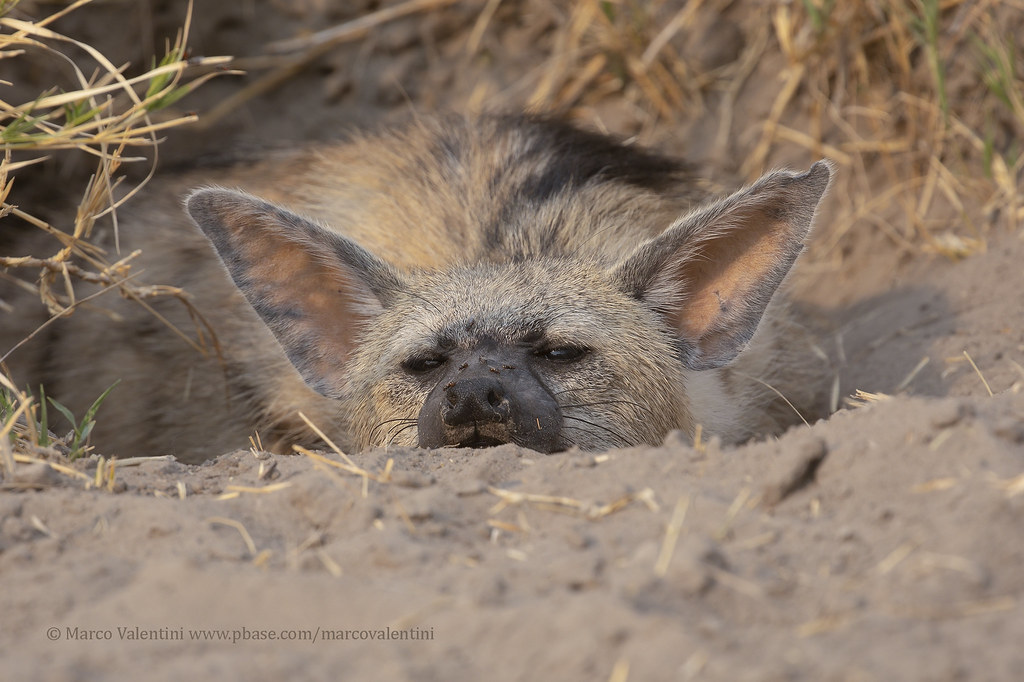#aardwolf (proteles cristatus)
Text

A female aardwolf (Proteles cristatus), photographed in South Africa’s Benfontein Nature Reserve. Sliwa first headed here in 1991 to do fieldwork on this species of hyena, then became fascinated by the black-footed cat.
Image by Alex Sliwa.
#alex sliwa#photographer#aardwolf#proteles cristatus#animal#mammal#wildlife#nature#south africa#benfontain nature reserve#hyena
121 notes
·
View notes
Text
this aardwolf does not have depression

good for Them!
#aardwolf#hyena#Proteles cristatus#animal#animals#animal memes#animal meme#meme#memes#iris human memes
42 notes
·
View notes
Text
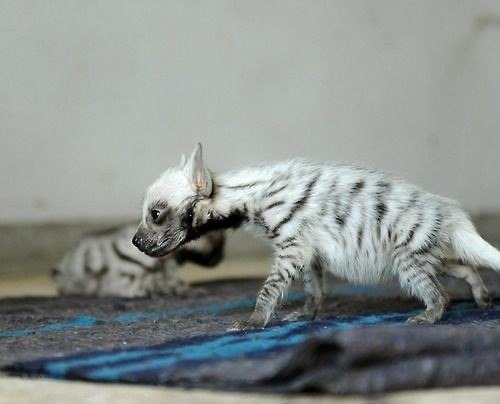
this is ridiculous. how are you that small for real
29 notes
·
View notes
Text

Aardwolf
14 notes
·
View notes
Text
me when i LIE...

well kind of this is actually a baby aardwolf which IS a hyena but not the typical spotted hyena everyone is most used to :) they're also insectivorous (only eat insects!!) which is pretty cool. this is what the babies of the 3 other hyena species look like for fun: the spotted, brown and striped hyenas ^_^
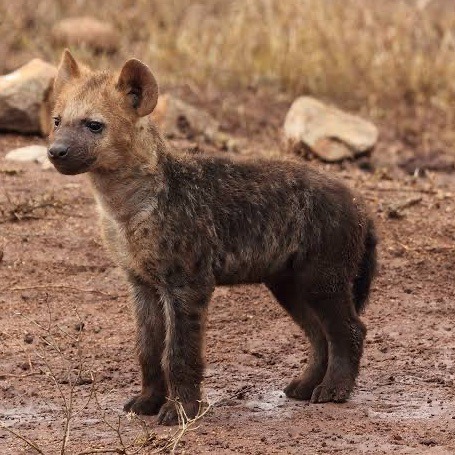


#spotted one is a little older than the rest but yeah#such funny kittypuppies#🐯#aardwolf (proteles cristatus)#spotted hyena (crocuta crocuta)#brown hyena (hyaena brunnea)#striped hyena (hyaena hyaena)#viverroidea#juvenile
25 notes
·
View notes
Note
🥚?

aardwolf!
(Proteles cristatus)
47 notes
·
View notes
Video
Aardwolf by Marco Valentini
Via Flickr:
Aardwolf (Proteles cristatus), Savuti, Botswana
#MarcoValentini#Aardwolf#Protele#Hyenidae#Protelescristatus#Savuti#Moremi#Botswana#carnivora#savannah#grassland#den
45 notes
·
View notes
Photo
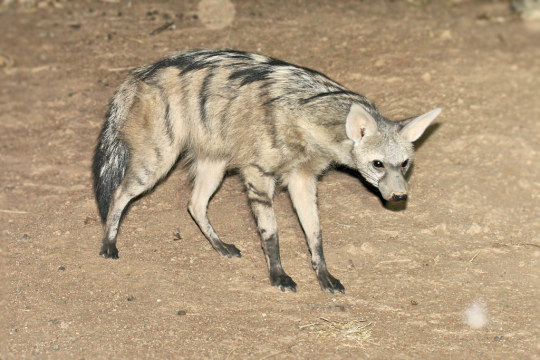
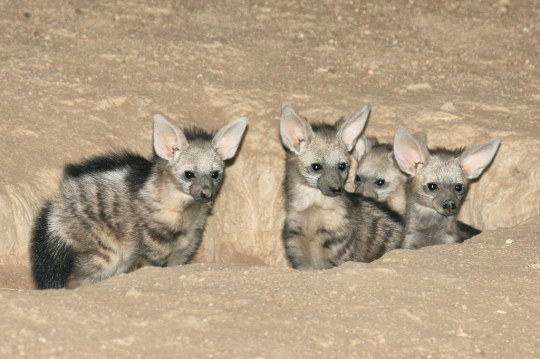
Aardwolf (Proteles cristatus) adults and cubs, Hobatere, Namibia, November 2017.
The aardwolf is a nocturnal species of hyena that feeds mainly on termites. they are found in Southern Africa and around the Horn of Africa.
photographs by Wildlife Wanderer | Flickr CC
714 notes
·
View notes
Note
The cat on page 74 and the final hyena (last page)
74 is the Inchochinese Clouded Leopard (neofelis nebulosa), which I think has like the coolest spots of all cats?
the Final Hyena is the East African Aardwolf (proteles cristatus septentrionalis) which apparently subsists almost entirely on termites
5 notes
·
View notes
Note
aardwolf (n.): a maned striped nocturnal mammal (Proteles cristatus) of southern and eastern Africa that resembles the related hyenas and feeds chiefly on insects and especially termites
POGGERS. Love that for them
0 notes
Text
Oh you like animals? Name every animal
Uh ok, sure
Aardwolf, Proteles cristatus
Admiral, indian red,Vanessa indica
Adouri (unidentified)unavailable
African black crake, Limnocorax flavirostra
African buffalo,Snycerus caffer
African bush squirrel,Paraxerus cepapi
African clawless otter,Aonyx capensis
African darter,Anhinga rufa
African elephant,Loxodonta africana
African fish eagle,Haliaetus vocifer
African ground squirrel, (unidentified)Xerus sp.
African jacana,Actophilornis africanus
African lion, Panthera leo
African lynx,Felis caracal
African pied wagtail,Motacilla aguimp
African polecat,Ictonyx striatus
African porcupine,Hystrix cristata
African red-eyed bulbul,Pycnonotus nigricans
African skink, Mabuya spilogaster
African snake, (unidentified)unavailable
African wild cat,Felis silvestris lybica
African wild dog,Lycaon pictus
Agama lizard, (unidentified)Agama sp.
Agile wallaby, Macropus agilis
Agouti,Dasyprocta leporina
Albatross, galapagosDiomedea irrorata
Albatross, wavedDiomedea irrorata
Alligator, american,Alligator mississippiensis
Alligator, mississippi,Alligator mississippiensis
Alpaca,Lama pacos
Amazon parrot, (unidentified)Amazona sp.
American Virginia opossum, Didelphis virginiana
American alligator, Alligator mississippiensis
American badger,Taxidea taxus
American beaver, Castor canadensis
American bighorn sheep, Ovis canadensis
American bison, Bison bison
American black bear, Ursus americanus
American buffaloBison bison
American crow, Corvus brachyrhynchos
American marten, Martes americana
American racer, Coluber constrictor
American woodcock, Scolopax minor
Anaconda (unidentified), Eunectes sp.
Andean goose, Chloephaga melanoptera
Ant, (unidentified)unavailable
Anteater, australian spiny, Tachyglossus aculeatus
Anteater, giant, Myrmecophaga tridactyla
Antechinus, brownAntechinus flavipes
Antelope ground squirrelAmmospermophilus nelsoni
Antelope, four-hornedTetracerus quadricornis
Antelope, roanHippotragus equinus
Antelope, sableHippotragus niger
Arboral spiny ratEchimys chrysurus
Arctic foxAlopex lagopus
Arctic ground squirrelSpermophilus parryii
Arctic hareLepus arcticus
Arctic lemmingDicrostonyx groenlandicus
Arctic ternSterna paradisaea
ArgalisOvis ammon
Armadillo, common long-nosedDasypus novemcinctus
Armadillo, giantPriodontes maximus
Armadillo, nine-bandedDasypus novemcinctus
Armadillo, seven-bandedDasypus septemcincus
Asian elephantElephas maximus bengalensis
Asian false vampire batMegaderma spasma
Asian foreset tortoiseManouria emys
Asian lionPanthera leo persica
Asian openbillAnastomus oscitans
Asian red foxVulpes vulpes
Asian water buffaloBubalus arnee
Asian water dragonPhysignathus cocincinus
Asiatic jackalCanis aureus
Asiatic wild assEquus hemionus
Ass, asiatic wildEquus hemionus
Australian brush turkeyAlectura lathami
Australian magpieGymnorhina tibicen
Australian masked owlTyto novaehollandiae
Australian pelicanPelecanus conspicillatus
Australian sea lionNeophoca cinerea
Australian spiny anteaterTachyglossus aculeatus
Avocet, piedRecurvirostra avosetta
Azara's zorroPseudalopex gymnocercus
3 notes
·
View notes
Text
Vocabulary (pt.dclxxxii)
Words taken from Lonely Planet Egypt, 13th ed., by Anthony Sattin, Jessica Lee, and Lonely Planet:
jacaranda (n.)
any tropical American tree of the genus Jacaranda, with trumpet-shaped blue flowers.
fennec (n.)
a small fox, Vulpes zerda, native to North Africa, having large pointed ears.
Riviera, the
part of the Mediterranean coastal region of southern France and northern Italy, extending from Cannes to La Spezia, famous for its scenic beauty, fertility, mild climate, and many fashionable and expensive resorts.
ibex (n.)
a wild goat-antelope, Capra ibex, especially of mountainous areas of Europe, North Africa, and Asia, with a chin beard and thick curved ridged horns.
hyrax (n.)
a mammal of the order Hyracoidea, comprising small stumpy animals of Africa and the Middle East, which resemble rodents but are actually related to ungulates and sirenians, having feet with nails like hoofs.
poinciana (n.)
any tropical tree of the genus Poinciana, with bright showy red flowers.
mazut (n.)
a heavy, low quality fuel oil, used in generating plants and similar applications.
salinization (n.)
a build up of salts in soil, eventually to toxic levels for plants.
aardwolf (n.)
an African mammal, Proteles cristatus, related to the hyena family, with grey fur and black stripes, that feeds on insects.
caracal (n.)
a lynx-like feline, Felis caracal, native to North Africa and Southwest Asia, having tufted black ears.
0 notes
Text
Striped Hyena
A compromised however It's located in human-dominated arenas in Rajasthan, a area with 4.3 % of land area protected under nature reservations. This massive carnivore mostly scavenges on wild and domestic ungulate carcasses. At the moment we lack strong estimates of hyena densities and comprehension of factors that affect their persistence and supply.
Research websites
All these will be the highlights of the analysis published in Journal of Mammology at 2010 (available for downloading at the link within the top-right).The Analysis was A forest array, Esrana receives an yearly rainfall of 300 mm using comparable temperatures, but includes reduced plant cover. Esrana has comparable carnivore species together with the accession of both desert cat and fox; however one of ungulates, just Chinkara, Nilgai and crazy pig exist. The altitudinal gradient at Kumbhalgarh is currently 288-1255m and also in Esrana is currently 160-835m.
Both websites differ in land-use regimes, percentage of scenic terrain and feasibility of running camera-trap surveys. Photographic Capture-recapture sampling approaches had been adopted to estimate the densities of their striped hyena in just two websites. The layout was predicated on striped-hyena motion and home range information reported by East Africa. To raise photo-capture prices, the trap websites were baited with foul meat. The research areas were split into 3 trapping cubes and detectors stationed at every place for 12 consecutive nights prior to being transferred to another block.
Approaches
The poll length of 36 times at each site given adequate assurance of demographic closed. Pelage markers on hind and forelimbs have been used to independently identify hyenas. Food availability in the kind of carcasses, possible refugia, migration styles of livestock herders and livestock densities was listed in both websites. A poll attempt of 548 snare nights at Kumbhalgarh and 538 snare nights at Esrana led to person catches of 33 hyenas at Kumbhalgarh and 16 at Esrana. There has been some evidence of snare avoidance behaviour.
The hyena density has been estimated to be 6.5 hyenas/100 sq kilometers in Kumbhalgarh and also 3.67 hyenas/100 sq kilometers in Esrana. The projected livestock density has been 73 animals/sq kilometers in Kumbhalgarh and 311animals/sq kilometers in Esrana. Most livestock in Esrana were possessed by rustic herders- that the Raika and their migration from this region for 6-8 months/year led to livestock densities falling drastically in Esrana. By comparison, there was a migration of 4000 hens from Kumbhalgarh.
The Outcomes
With accounting for observations of this migration tendency of livestock herders, it had been discovered that Esrana had greater livestock density (140 animals/sq kilometers) in comparison to Kumbhalgarh (60 animals/sq kilometers). High access to livestock carcasses in the websites regardless of the intrusion of herders has been believed to transcend the demands of hyenas in both websites and livestock density wasn't a crucial determinant of both hyena densities.
Analyzing the degree of likely refugia in both websites indicated that since 85 percent of Kumbhalgarh is scenic in comparison to Esrana's 35 percent Kumbhalgarh could have higher potential refugia websites from individuals and feral dogs compared to Esrana. There's small Scientific information to be found on the key environmental factors influencing wealth and densities of striped hyenas from India. Knowing what factors affect hyena persistence will likely be crucial, especially since most hyena populations occur outside protected areas in human-dominated arenas.
The Striped
This analysis supplies a strong methodological approach utilizing picture capture-recaptures to gauge hyena densities and analyze environmental variables impacting these densities. The authors find evidence that the presence of likely refugia which are disturbance-free from individuals and feral dogs, higher livestock densities together with inherent societal tolerance (non-consumption of beef from livestock carcasses by people) for hyenas leads for their own persistence in India.
The tiniest hyena from the household hyaenidae is that the Aardwolf (Proteles cristatus). The Aardwolf seems similar to the Striped Hyena; nevertheless, it's Considerably bigger with a more pointed muzzle and more slender ears that are used for listening to harvester termites. Female and male Striped Hyenas are extremely Similar in look, although men are somewhat bigger. Their coats are usually light gray to beige in color and they got a dark spot in their own throat.
STRIPED
Stripes are more notable in the summertime and not as defined in winter. Like most creatures that occupy very hot desert colours, their ears radiate warmth. When threatened, the mane which extends the middle of the trunk can be produced vertical making the hyena seem much bigger (38 percent) and much more intimidating to predators. Their tail is long, minute, covered so long, class hair and can be white and black in color. Each of the paws includes four non-retractable, brief, blunt claws.
Hyenas have big scent glands in their rears. They have wide heads and very big eyes. The Striped Hyena generally occupies deserts, Family bands live in dens that are generally caves with narrow entrances and therefore are hidden with big boulders. Dens can stretch over a space of 4 metres. Will feed small creatures insects, fruits (petroleum willow veggies), melons as well as customs. They often scavenge carrion along with the remains of the other critters kill. They use their strong limbs to crush bones.
Hyenas Effective
Hyenas are effective at digesting portions of prey Other creatures can't. Components like hooves, horns, ligaments and hair are regurgitated to pellets. They'll also take any excess meat located at a scavenger website. Striped Hyenas could drink Many Kinds of Water can be consumed each night if it's accessible, but the Striped Hyena can endure for lengthy stretches of time with no water since it's adapted to live in desert states. Striped Hyenas forage independently or in pairs. Water whole to water hole; nevertheless they never go more than 6 kilometers from a water resource.
They have smaller home ranges compared to or walnut Hyena. Striped Hyenas indicate the lands with their scent gland secretions in their rectal pouch. Much like Brown Hyenas, Striped Hyenas have been believed to be less outspoken then their seen cousins although all of them have elaborate greeting rituals. There's no special breeding season to your Striped Hyena. Their coats are white to gray with stripes that are clear. After 7 seven times, the cubs can start their eyes and their teeth grow after 3 months.
0 notes
